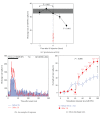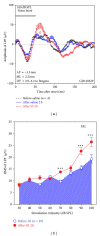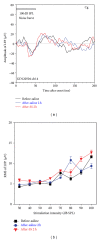Salicylate-induced auditory perceptual disorders and plastic changes in nonclassical auditory centers in rats
- PMID: 24891959
- PMCID: PMC4033555
- DOI: 10.1155/2014/658741
Salicylate-induced auditory perceptual disorders and plastic changes in nonclassical auditory centers in rats
Abstract
Previous studies have shown that sodium salicylate (SS) activates not only central auditory structures, but also nonauditory regions associated with emotion and memory. To identify electrophysiological changes in the nonauditory regions, we recorded sound-evoked local field potentials and multiunit discharges from the striatum, amygdala, hippocampus, and cingulate cortex after SS-treatment. The SS-treatment produced behavioral evidence of tinnitus and hyperacusis. Physiologically, the treatment significantly enhanced sound-evoked neural activity in the striatum, amygdala, and hippocampus, but not in the cingulate. The enhanced sound evoked response could be linked to the hyperacusis-like behavior. Further analysis showed that the enhancement of sound-evoked activity occurred predominantly at the midfrequencies, likely reflecting shifts of neurons towards the midfrequency range after SS-treatment as observed in our previous studies in the auditory cortex and amygdala. The increased number of midfrequency neurons would lead to a relative higher number of total spontaneous discharges in the midfrequency region, even though the mean discharge rate of each neuron may not increase. The tonotopical overactivity in the midfrequency region in quiet may potentially lead to tonal sensation of midfrequency (the tinnitus). The neural changes in the amygdala and hippocampus may also contribute to the negative effect that patients associate with their tinnitus.
Figures









References
-
- Bobbin RP, May JG, Lemoine RL. Effects of pentobarbital and ketamine on brain stem auditory potentials. Latency and amplitude intensity functions after intraperitoneal administration. Archives of Otolaryngology. 1979;105(8):467–470. - PubMed
-
- Cazals Y. Auditory sensori-neural alterations induced by salicylate. Progress in Neurobiology. 2000;62(6):583–631. - PubMed
-
- Jastreboff PJ, Brennan JF, Coleman JK, Sasaki CT. Phantom auditory sensation in rats: an animal model for tinnitus. Behavioral Neuroscience. 1988;102(6):811–822. - PubMed
-
- Lobarinas E, Sun W, Cushing R, Salvi R. A novel behavioral paradigm for assessing tinnitus using schedule-induced polydipsia avoidance conditioning (SIP-AC) Hearing Research. 2004;190(1-2):109–114. - PubMed
-
- Kizawa K, Kitahara T, Horii A, et al. Behavioral assessment and identification of a molecular marker in a salicylate-induced tinnitus in rats. Neuroscience. 2010;165(4):1323–1332. - PubMed
Publication types
MeSH terms
Substances
Grants and funding
LinkOut - more resources
Full Text Sources
Other Literature Sources

